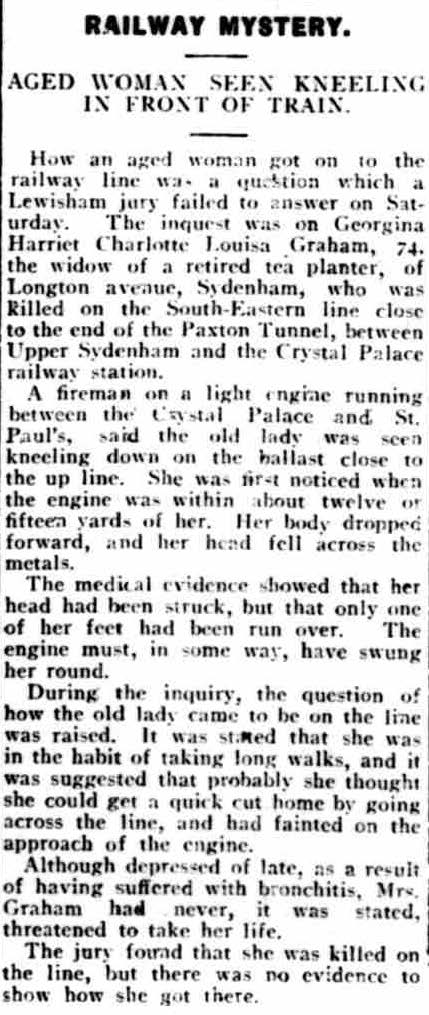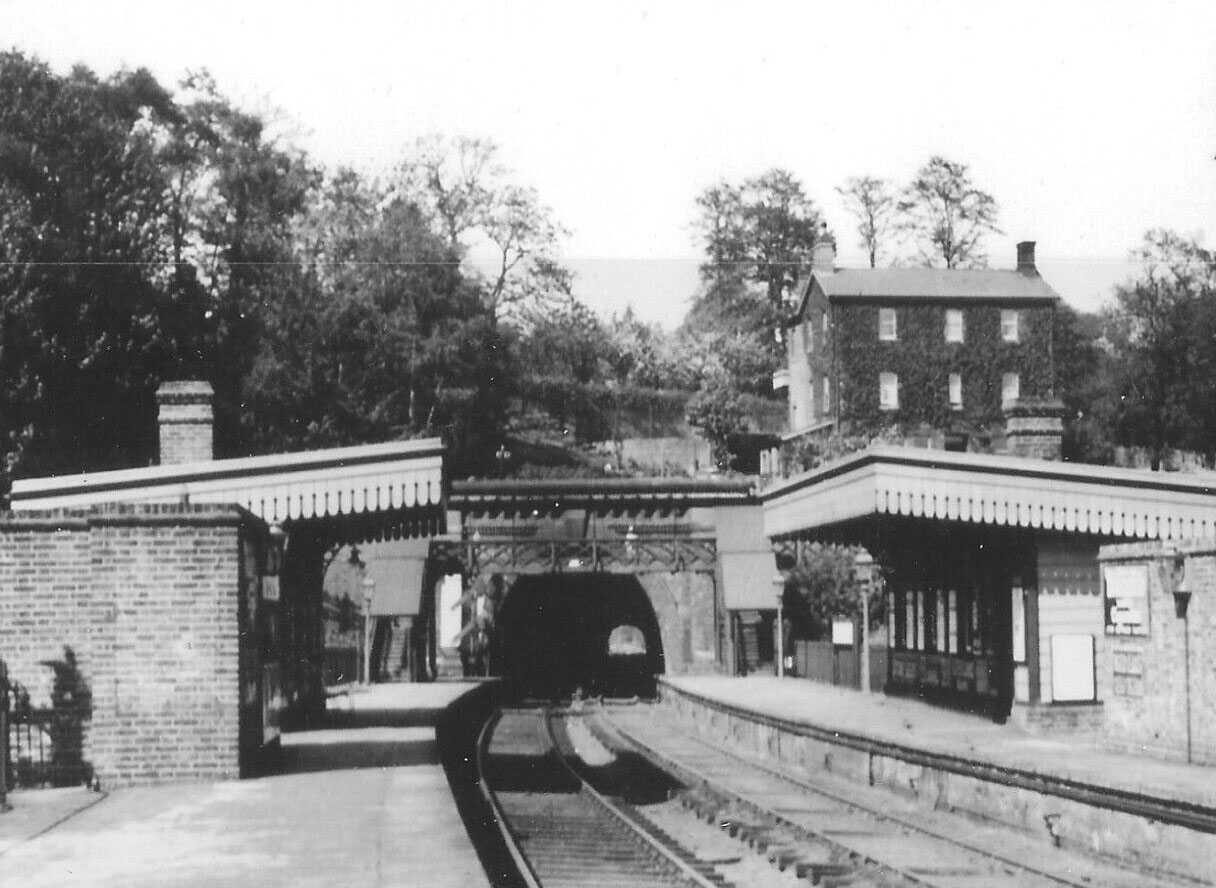According to my mother, her mother, who was a Graham, said that we are descended from the Scottish Grahams of Montrose, and contact with distant relatives, whose closest common ancestor with me is my great3-grandfather, confirmed that they were aware of the same tradition. However, I have only been able to trace my Graham ancestors as far back as Walter Graham, a grocer of Wantage in Berkshire, who died in 1743, his will mentioning his four children, Thomas, Robert, Walter and Mary. He would have probably been born in the 1680s or 90s and he married Mary Finnimore at West Challow, a few miles west of Wantage, in 1717 but his oldest son, my ancestor Thomas, appears to have been born a couple of years earlier, so whether Mary was his mother or Walter had fathered him by another woman, perhaps in a previous marriage, is not known. On the bond relating to Walter’s marriage to Mary Finnimore, Walter is described as a bachelor.
After working in partnership with his brother Robert in Wantage, Thomas went on to become a linen draper in Reading, marrying Dorothy Fuller at Blewbury in 1753. Her ancestors can be traced three generations further to her great-grandfather John who married Jane Slade there nearly a century earlier. Thomas and Dorothy had five children and all were baptised at the Broad Street Independent chapel in the town. The youngest of their four boys was William and it is from him that I am descended. He was born in 1764 and from December 1784, by this time living in Newbury and a linen draper like his father, he took an apprentice, William Gooden for five years. When William Graham married it was to a woman named Mary and among their children were two daughters, the elder presumably dying young, who were both christened Mary Wareham Graham. Thus it seems probable that their mother’s maiden name was Wareham. However, no record has been found of the marriage of a William Graham and a Mary Wareham, so maybe Wareham was a family name associated with William’s wife, for the only marriage I have found that fits with the dates of their children was to a Mary Taylor, which took place at the church of St Clement Danes in the Strand in London in January 1785. At the time of this marriage he was described as of same parish, and banns will have been read during the preceding three weeks. However, on the apprenticeship record he is stated to be of Newbury. So the marriage to Mary Taylor must be in some doubt.
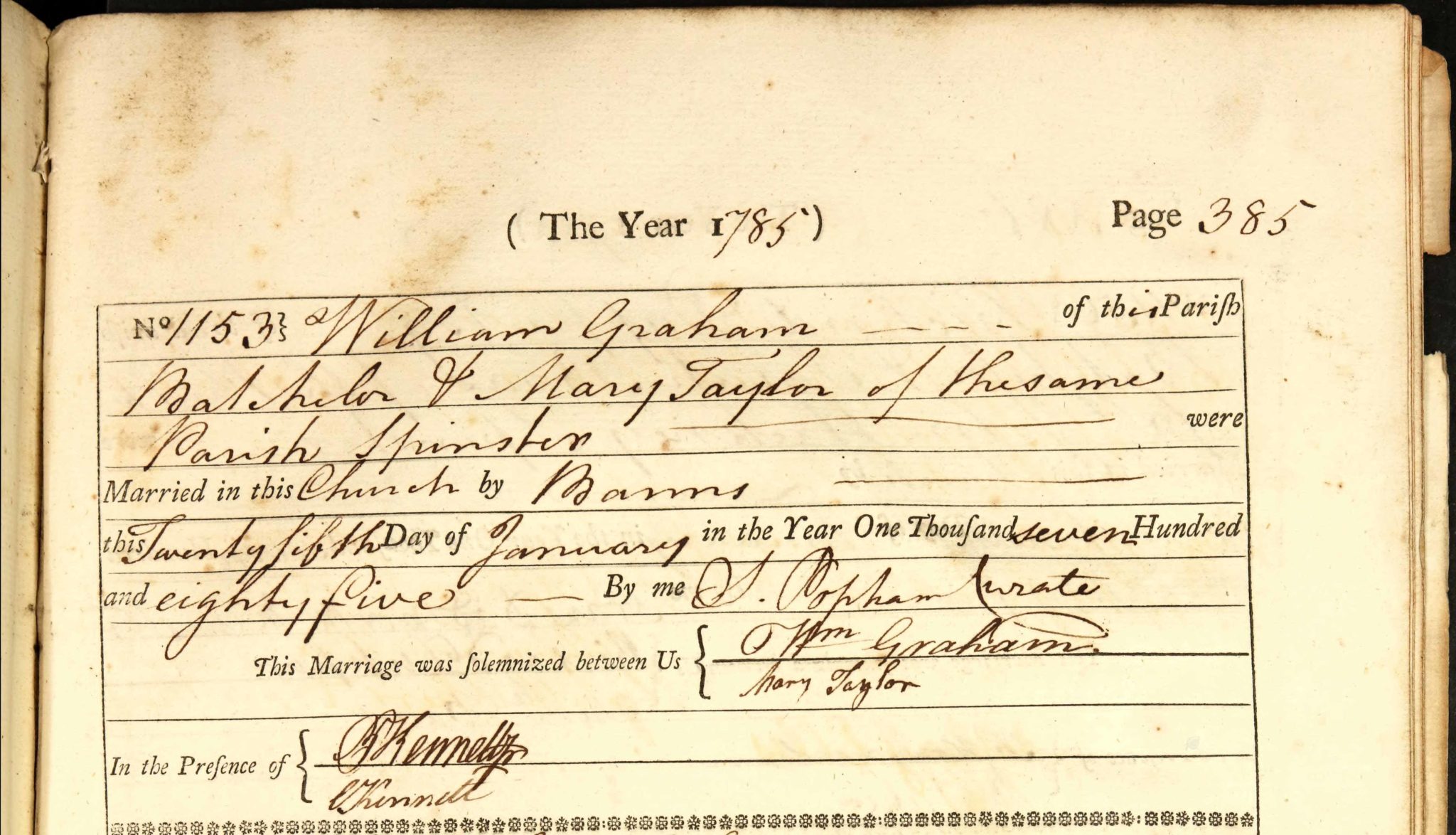
William and Mary’s oldest child was born in December 1785 and they were to have 11 children in all, each christened at the Lower Meeting House off Northbrook Street in Newbury, where stone plaques still commemorate members of the family. Three of their sons became lawyers, William, Thomas and my great-great-grandfather Robert, while another, Joseph, was to retire with the honorary rank of Major General in the Bengal army. Robert Fuller Graham was the youngest son and was born in 1802. He started his career as clerk to his brother-in-law, William Hedges, who had married his older sister Martha, and from about 1824 he had his own solicitor’s practice, which in due course became Graham & Sons, in Cheap Street, Newbury. In 1826 he married Harriet Jordan, whose family came from Gosport in Hampshire. Robert’s position in the town gave him considerable influence and respect and in 1838 he was appointed Under-Sheriff of Berkshire. His chief role, however, was as Town Clerk of Newbury, a post which he held for 22 years from 1854. He and Harriet moved to Greenham where Robert died in 1877, Harriet three years later in St Leonards, Sussex.
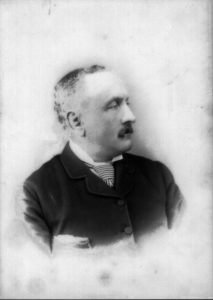
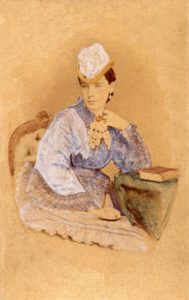
Robert and Harriet had nine children, six boys and three girls. Typically for the second half of the 19th century, three of the boys chose to seek a life overseas in the British Empire. My great-grandfather, the second Robert Fuller Graham, began his working life articled as a clerk to his older brother Charles in their father’s firm of solicitors but he tired of that and took a boat to India where he became a tea planter in Darjeeling and in 1868 married Georgiana Worgan, whose older brother was in the Indian Civil Service (see The Worgans). Their first child, George, was born there six months later. Four years on and Robert’s brother, Birchall, who had resigned his commission in the army after serving in the Crimea and in Abyssinia, joined him and for a few years they operated a tea plantation together. Georgiana returned to England for the birth of her second child, John, in 1872 but was back in Darjeeling when Frank, their third arrived two years after. I do not know what prompted Robert to give up running the tea plantation with his brother and for he and Georgiana to return to England permanently in about 1876. The tea business still thrives, run by Birchall’s descendants and now named after him. Robert brought his family back to Newbury and for a while he went to work again at the family legal firm. The 1881 census shows the family living in Cheap Street, two of the boys being joined by two sisters, Mary (who was known as Mollie), and who had been born in nearby Speen, and Violet who was only 6 months old. One more daughter would be added to the family the next year, my grandmother Agnes Daisy Graham.
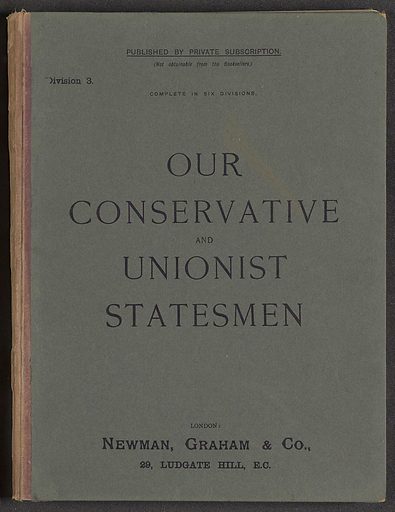
Sir Henry Berney, a cousin of Georgiana’s, gathered together a great deal of genealogical infomation about his family and their wider connections, and peppered the notes he made with some comments on various individuals. Among them was the comment that Robert Graham was rather overfond of liquor. Whether that had had a bearing on the decision to leave India may never be known, but he does not seem to have settled when back in England. In 1885 he was declared bankrupt, and by 1891 the family had moved to Sydenham in south London, and later to Hendon. He seems to have attempted some form of recovery because by 1895 Robert was working in partnership as a book publisher in Newman, Graham & Co of Ludgate Hill whose sole output seems to have consisted of a series of six, what would nowadays be regarded as ‘coffee table’, books of photographs of Conservative and Unionist politicians. It was in Hendon in 1904 that Daisy Graham was married to Wilmot Spencer (see The Spencers). But Robert evidently still found difficulty maintaining the lifestyle he probably wanted or felt that he was expected to provide. In March of 1906 he took a room above a coffee shop in Paddington and swallowed a lethal dose of chlorodyne, a patent opiate preparation. On the 21st March 1906 reports appeared in the papers as follows:
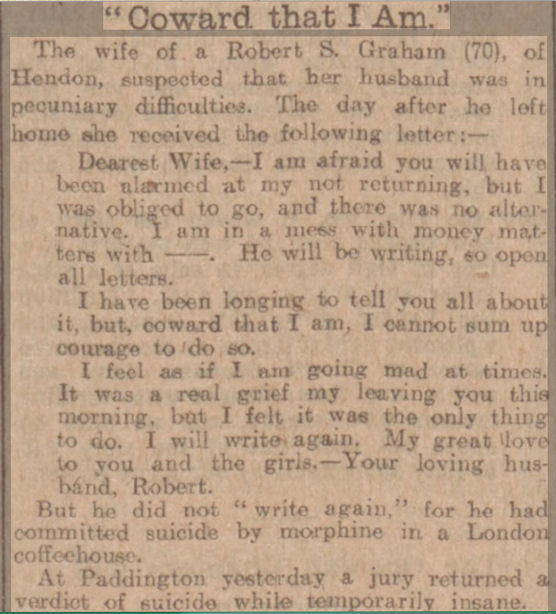
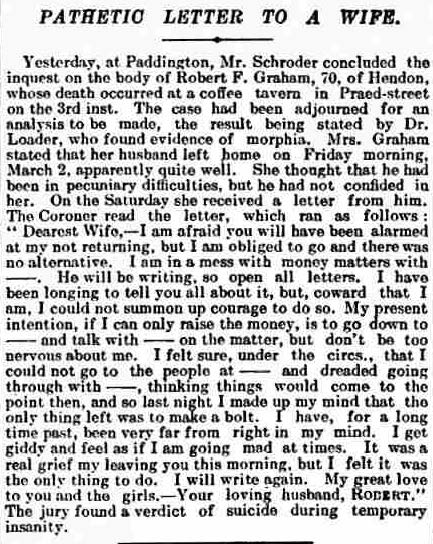
In a tragic postscript 10 years later, Georgiana, who was then living with Daisy, Wilmot and their family, took herself off and wandered onto the railway line at Upper Sydenham station, stepping in front of a train that was unable to stop in time, fatally injuring her. The verdict at the inquest was open, it being uncertain whether she had acted deliberately.
